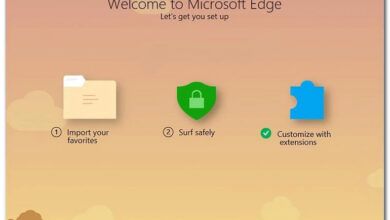Fix: Microsoft Edge Can’t Read and Write to its Data Directory
The error “Microsoft Edge can’t read and write to its data directory” generally suggests a problem with file permissions, preventing Edge from accessing its data directory. However, this isn’t always the cause. Other potential contributors to this issue include problems with the WebView2 Runtime or corruption within Edge’s files. These factors can disrupt normal functionality and lead to the error message.

1. Run Microsoft Edge as an Administrator
One of the simplest solutions to this issue is running Microsoft Edge as an administrator. However, this will only work if you encounter an error while using Microsoft Edge to access a website. If you’re experiencing an issue with a third-party application unrelated to Edge, this method may not resolve the problem, and you should consider trying other solutions.
- Simply right-click on Microsoft Edge and select Run as administrator. If the issue is resolved, configure Microsoft Edge to always run as an administrator.

- To do that, right-click Microsoft Edge and go to Properties.

- Then, go to Compatibility and check Run this program as administrator.

- Once done, click Apply and then OK to save the settings.
2. Repair Microsoft Edge WebView2 Runtime
Microsoft Edge WebView2 Runtime is a runtime environment used by many third-party applications to render web content, such as HTML, CSS, and JavaScript, within their native desktop applications using the Microsoft Edge browser’s rendering engine.
Several third-party applications rely on Microsoft Edge WebView2 Runtime for web-based content. Therefore, any issues with the WebView2 Runtime could prevent these applications from accessing necessary resources, potentially resulting in the error message “Microsoft Edge can’t read and write to its data directory.” Therefore, in this step, we will try repairing the Microsoft Edge WebView2 Runtime, which will restore the corrupted files that may be causing the issue.
- Right-click the Start Menu or Windows icon and select Run to open the Run dialog.
- Type appwiz.cpl and click OK to open Programs and Features in the Control Panel.

- Here, double-click Microsoft Edge WebView2 Runtime and click Repair.

- Wait for the process to complete. Once done, check if this resolved the error.
3. Check Folder Permissions
To resolve the error message, it is important to ensure that the application has the necessary permissions to access the Microsoft Edge WebView2 Runtime. In this case, we will configure the permissions for Microsoft Edge. If you’re experiencing this issue with another application, make sure it also has the appropriate read and write permissions.
Additionally, you need to check the permissions for the folder where WebView2 stores data for embedded web components used by many applications. By ensuring that the user account has proper permissions, you can prevent the error message from occurring.
- Press the Win + R keys simultaneously to open the Run dialog.
- Type appdata in the input box and click OK.

- Navigate to Local > Microsoft.
- Here, right-click Edge and select Properties.

- Go to Security and make sure that all user accounts have Full Control over the folder. If you see any missing permissions, take full control of the folder by following the steps described in the linked article.
- Once done, navigate to the AppData\Local\Microsoft\Edge directory, right-click the User Data folder, and go to Properties.

- Then, go to Security from the top and make sure you have full control over the folder. If you see any missing permissions for the folder, configure the folder permissions by following the steps in the linked article.

If the error continues to appear, contact Microsoft Support, particularly if you’re experiencing this issue with a Microsoft-developed application.





